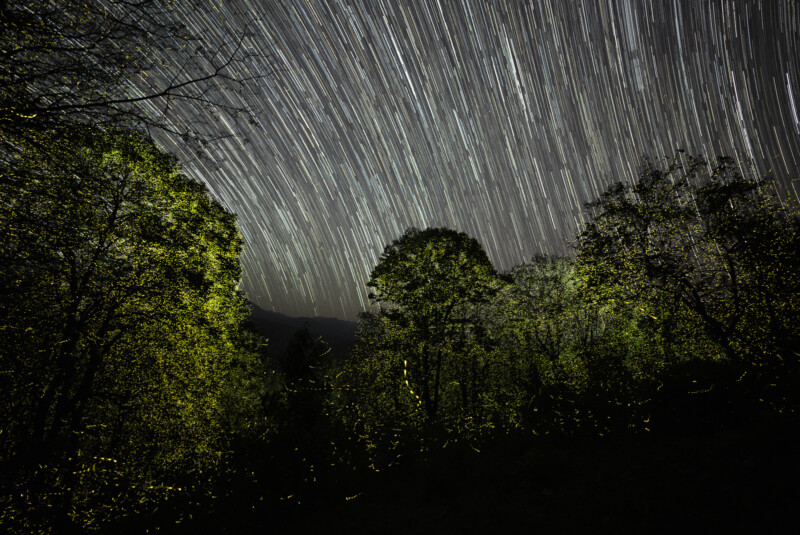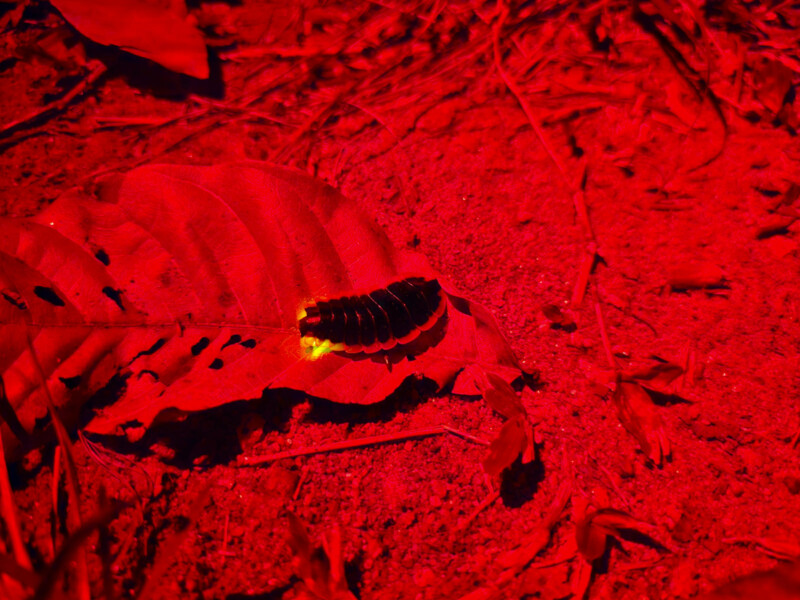Dazzling Photos of Fireflies Lighting Up a Wildlife Sanctuary in India
![]()
A photographer has captured spectacular new photos of billions of fireflies blanketing the trees of a wildlife sanctuary in India.
The congregation of synchronous fireflies fills the foliage with flashing points of light, and long-exposure photographs can show the sheer number of insects that cover the landscape.

As a co-founder of an NGO called Wild and Dark Earth (WiDE), Murali has been not only photographing but researching the diversity, life cycle, ecology, and population factors of the fireflies as well.
“After the first summer rains, firefly larvae start emerging in the wet, evergreen forests,” the researchers write. “Fireflies live as larvae for a year before they pupate and become the adult fireflies we know.
“Firefly larvae glow to warn predators. They use bioluminescence as a defense mechanism. The larvae depend on moisture to prevent them from desiccating. They are voracious predators and feed on soft-bodied insects such as earthworms, snails, and slugs.”

An interesting discovery by the WiDE team was that firefly larvae feed on leeches.
“Leeches also prefer moist environments,” the scientists write. “Firefly larvae eat 5 to 10 insects every night. Any reduction in firefly populations would mean an exponential increase in leech populations and would throw the entire ecosystem off balance. Many studies suggest that leeches can have a negative impact on native wildlife species.”
![]()
As adults, fireflies use their flashing as a tool for courtship.
“After a year of growing, the larvae go through a stage of pupation to become the adult fireflies with wings,” the scientists say. “As adults, fireflies seldom eat. They despise sunlight and rest in shaded areas during the day. As adults, fireflies have one purpose – to mate. Fireflies flash to communicate, especially to find mates.
“Studies have shown that synchronized displays of fireflies are more attractive to females and easier to identify their own species in crowded areas. In Manomboly, forest officials and researchers at WiDE witnessed large congregations of fireflies flashing in unison, brightly lighting the ground and the trees, while the stars shone overhead.
“After mating, female fireflies lay eggs and the whole cycle continues again. Even the eggs display bioluminescence.”
![]()
WiDE was formed in 2022 with the mission of conserving nocturnal habitats. Efforts so far have included mapping firefly populations in India, developing scientific strategies for firefly conservation, and raising awareness on the wonders of the dark and the ill effects of light pollution — fireflies flee white light, and artificial lighting decreases populations by hindering the insects’ ability to mate.
“Fireflies are among the most magical creatures on Earth,” WiDE writes. “Their populations are on the decline across the world. Such large congregations in huge areas of the forest are very rare. So, it’s a major feat to document them in yet another range in ATR. It’s a testament to the years of conservation efforts from the forest department.
“It’s fascinating that such tiny insects are able to coordinate their flashes so well, putting on one of nature’s greatest orchestras. It is such a sight to behold. This natural wonder must be preserved for posterity.”
Image credits: Photographs by Sriram Murali